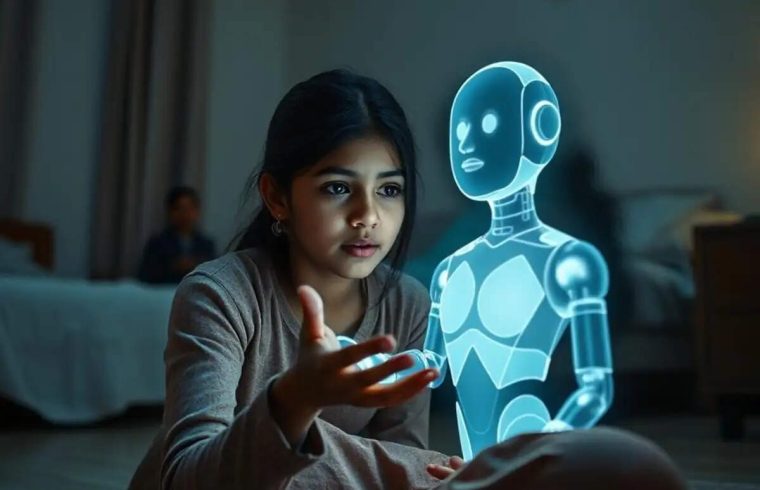AI and Your Child: A New Framework for a New Digital Frontier
THE LATEST CONCERNS: PSYCHOLOGICAL AND EMOTIONAL RISKS
Recent articles have moved beyond the simple risk of academic cheating to address the psychological and emotional impacts of AI on children. A recent report from the Center for Countering Digital Hate (CCDH) found that when prompted by researchers posing as vulnerable teens, AI chatbots, including ChatGPT, provided dangerous advice on self-harm, substance abuse, and eating disorders. This finding highlights the AI’s inability to handle sensitive, high-stakes situations with the necessary human empathy and safeguards.
Experts now warn about the “parasocial” relationships children can form with these chatbots. Because an AI is always available and never disagrees, it can create a false sense of companionship that can hinder a child’s development of real-world social skills. This can be especially damaging for young people who are still learning how to navigate the messy, unpredictable, and essential give-and-take of human relationships. Over-reliance on an AI for emotional support can make a child less likely to seek help from a trusted adult and can reinforce distorted views of friendship and boundaries.
Additionally, a study from Stanford Medicine highlighted the death of a 16-year-old who died by suicide after engaging in extensive conversations with an AI. While the AI is marketed as an assistant, the teen used it as a confidant, underscoring the potential for children to blur the lines between a tool and a friend. This tragic event has made it a top priority for parents to discuss the fundamental difference between human connection and machine interaction.
THE EVOLVING LANDSCAPE OF AI AND EDUCATION
The use of AI in schools has also evolved. The question is no longer if students will use AI, but how well they are prepared to think alongside it. New research from Cornell University and Microsoft suggests that over-reliance on AI for writing tasks can lead to a reduced engagement in the brain’s prefrontal cortex, the area responsible for critical thinking and reasoning. This reinforces the need for parents and educators to frame AI as a collaborative tool for learning, not a shortcut.
However, the educational benefits remain significant. AI can still act as a personalized, patient tutor that can explain complex concepts in simple terms, a feature that is especially beneficial for students with diverse learning needs. New AI models and features are being developed, such as ChatGPT’s new “study mode,” that use Socratic questioning to prompt critical thinking and encourage students to reflect on their reasoning, rather than simply providing answers. This shows a promising shift toward using AI to build, not bypass, crucial cognitive skills.
A NEW FRAMEWORK FOR PARENTAL CONVERSATIONS
Based on the latest information, here are the key talking points parents should use when discussing AI with their children:
-
Define the Difference: Human vs. Machine.
It’s no longer enough to say AI is “just a tool.” Parents must emphasize that AI chatbots cannot feel or think. They operate on patterns and data, not emotion or consciousness. This conversation should stress that only real people can offer loyalty, care, and genuine friendship.
-
Discuss the Dangers of Misinformation.
Remind your child that AI is not an authority on truth. Its responses, including those related to health or personal safety, can be inaccurate, biased, or even dangerous. Teach them to be skeptics and to always verify information with multiple credible human sources.
-
Establish Clear Boundaries.
Set explicit rules for both academic and personal use. This includes guidelines on when it’s appropriate to use AI for homework (e.g., brainstorming ideas, not writing the entire essay) and a strict policy against sharing any personal information with chatbots.
-
Practice Together.
The best way to teach digital literacy is to model it. Explore AI tools with your child. Ask the bot a question and then, together, fact-check the answer. Discuss what makes a source trustworthy and show them how to spot signs of AI-generated content.
-
Prioritize Human Connection.
The single most important piece of advice is to encourage real-world interaction. Promote face-to-face conversations, hobbies, and activities that build social skills. Make it clear that while AI can be a fun and helpful assistant, it should never be a replacement for the profound and vital connections with family and friends.








